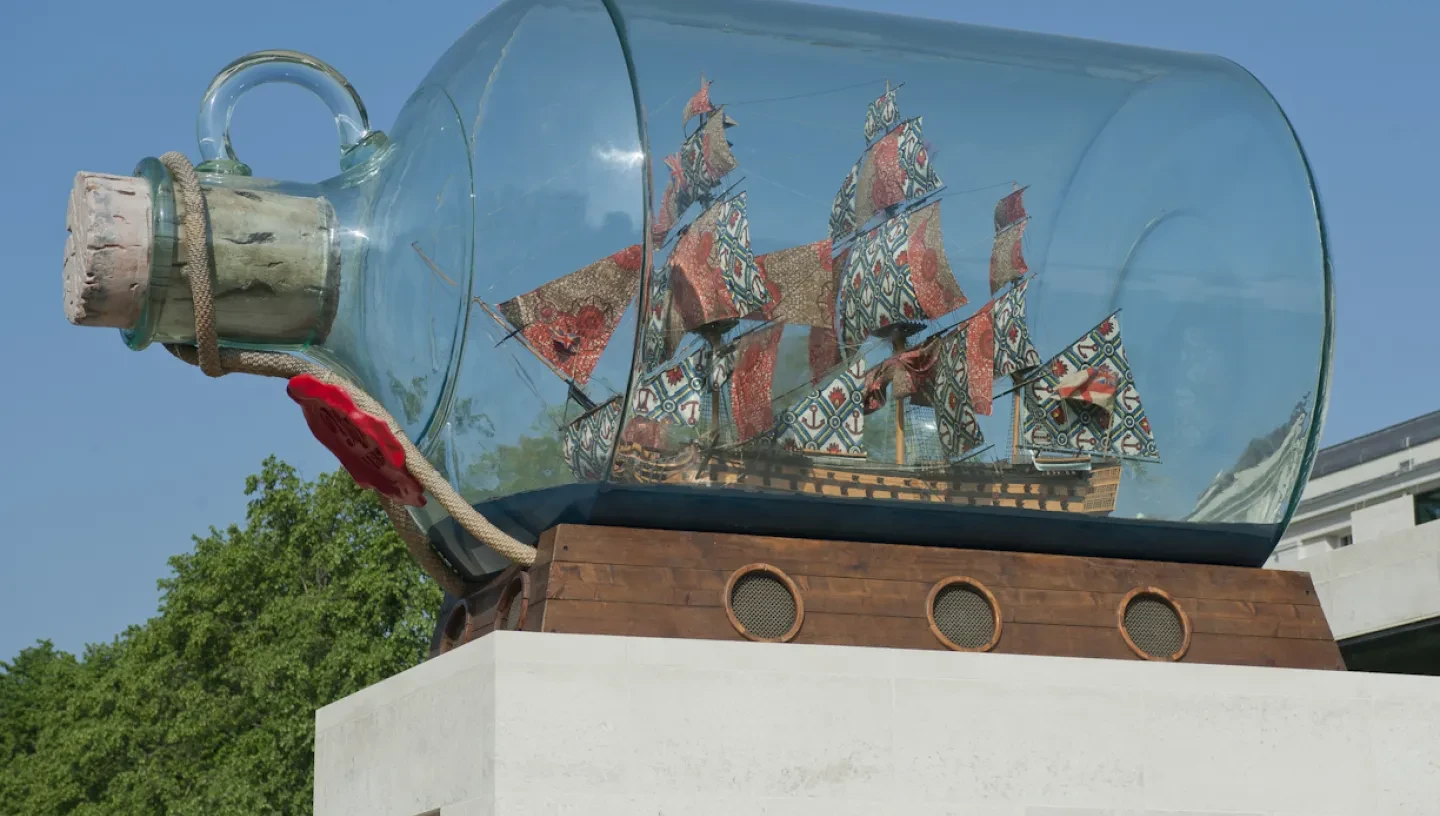
Yinka Shonibare CBE explores colonialism and post-colonialism in his art. Nelson's Ship in a Bottle was acquired by the National Maritime Museum in 2012.
Introducing Yinka Shonibare
Yinka Shonibare CBE was born in London and moved to Lagos in Nigeria at the age of three. He returned to London to study Fine Art at Central Saint Martins College of Art and Design, and later at Goldsmiths College, where he graduated alongside the generation of other 'Young British Artists'.
In 2004 Shonibare was nominated for the Turner Prize and awarded an MBE. Internationally respected, the artist has exhibited at the Venice Biennial, the Museum of Contemporary Art in Sydney, Brooklyn Museum in New York and the Smithsonian Institution in Washington. In 2019, he was made a CBE.
Shonibare is known for his exploration of colonialism and post-colonialism, and his work explores these issues, alongside those of race and class, through the media of painting, sculpture, photography, film and performance.
Nelson's Ship in a Bottle
Nelson's Ship in a Bottle is a scaled-down replica of Nelson's flagship HMS Victory, on which the Admiral died during the Battle of Trafalgar on 21 October 1805. It has 80 cannon and 37 sails set, as on the day of battle. The richly patterned sails were inspired by Indonesian batik, mass-produced by Dutch traders and sold in West Africa.
First exhibited on the Fourth Plinth in Trafalgar Square in 2010, Nelson's Ship in a Bottle considers the complexity of British expansion in trade and empire made possible through Nelson's victories at sea.
Yinka Shonibare at Royal Museums Greenwich in 2014
In autumn 2014 Royal Museums Greenwich presented a series of new and recent works by Yinka Shonibare. The exhibition responded to the historic surroundings of the Queen's House, the National Maritime Museum and the Royal Observatory, and explored themes of Britishness, trade and empire, commemoration and national identity.
In the Queen's House, Shonibare displayed Nelson's Jacket (2011) and Fanny's Dress (2011). Made from Dutch wax fabric, these two sculptural works looked towards each other across the magnificent Great Hall.
The artist’s Fake Death Pictures depicted five alternative visions of Nelson's death. Each photograph recreated a famous artistic death scene, placing Nelson at the centre, rather than the original subjects. These works referenced paintings by Leonardo Alenza y Nieto, Édouard Manet, Henry Wallis, Bartolomé Carducho and François-Guillaume Ménageot.
The Queen's House lawn was dominated by Wind Sculpture (2013). Measuring six metres by three metres and painted with a batik pattern, the work explored the notion of capturing and freezing a volume of wind in a moment in time, and echoed the billowing sails of historical ships.